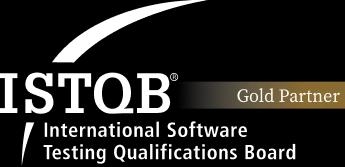
What is Hybrid Learning? A Detailed Overview of Hybrid Learning
In the context of education and training increasingly shifting towards a digital environment, blended learning models are becoming a new trend, meeting the flexible needs of learners. One of the most advanced and popular models today is Hybrid Learning. This approach is not just a mix of online and in-person learning but offers a flexible method, allowing learners to choose the learning style that best suits their schedules and individual conditions. So, what exactly is Hybrid Learning, and why is it so highly regarded for optimizing the learning experience? Let’s explore this model in detail with Tokyo Tech Lab through the article below.
I. What is Hybrid Learning?
Hybrid Learning, also known as "blended learning," is a learning model that integrates traditional (in-class) methods with online (digital platform) learning. Unlike Blended Learning, which alternates between online and offline learning according to a fixed schedule, Hybrid Learning is a flexible combination of the two, creating a diverse and rich learning environment.
The Hybrid Learning model combines both in-person and online learning simultaneously, allowing students to choose the learning mode that best suits their personal needs and circumstances. This combination offers learners a flexible experience, leveraging the strengths of both methods, optimizing time, enhancing interaction, and personalizing the learning journey.
II. Differences Between Hybrid Learning and Blended Learning
Although both Hybrid Learning and Blended Learning combine in-person (face-to-face) and online learning, there are notable differences:
Hybrid Learning allows students to choose how they attend class based on their personal circumstances. Specifically, in a Hybrid class, students can attend in person in the classroom or remotely through online platforms like Zoom, Microsoft Teams, or Google Meet. This means that in the same class session, some students can be physically present in the classroom, while others join from a distance via the Internet, all receiving the same instruction and able to interact. This model provides maximum flexibility, making it easy for students to choose a mode of participation that aligns with their schedules or circumstances, such as when facing mobility issues or requiring remote learning.
In contrast, Blended Learning requires all students to participate in both in-person and online modes according to a fixed plan. Rather than allowing students to choose between online or in-person learning, Blended Learning combines classroom sessions with supplementary online activities. For example, students may attend an in-person lecture on a specific day and complete assignments or participate in online activities on other days. This model is designed to optimize the learning experience by combining different teaching methods but requires students to adhere to a pre-determined schedule.
In summary, the main difference between the two models lies in flexibility. Hybrid Learning allows students to choose how they participate (in-person or online) according to their individual needs, while Blended Learning requires students to participate in both forms according to a set schedule, aiming to maximize interaction and provide a comprehensive learning experience.
III. What Are the Benefits of Hybrid Learning?
Hybrid Learning offers numerous advantages for students, instructors, and educational institutions alike. Here are the main benefits of this learning model:
Optimized Flexibility: Students are free to choose the learning format that best suits their personal time and needs. This is particularly useful for those with busy schedules or changing agendas.
Enhanced Learning Experience: By combining online and in-person learning, students gain access to a wide variety of educational resources, from instructional videos and digital materials to direct group discussions.
Improved Interaction and Engagement: With Hybrid Learning, teachers can organize online discussions, group assignments, and real-time assessments, helping students feel constantly connected and actively engaged in the learning process.
Reduced Travel Costs and Time: With a blend of in-person and online classes, Hybrid Learning saves students time and costs related to travel, such as fuel or accommodation for those from afar. Students can attend classes from anywhere with Internet access, significantly saving time and money.
Suitable for Various Training Types: This model not only suits higher education but is also effectively applied in corporate training, soft skills courses, and professional development programs.
Enhanced Teaching Effectiveness: For instructors, Hybrid Learning provides an opportunity to utilize diverse teaching methods, from live lectures and tutorial videos to online exercises. This combination helps teachers be more flexible in delivering content, optimizing the teaching process, and tracking student progress through online tools.
Unlimited Learning Accessibility: Hybrid Learning extends educational access to everyone, especially those with geographic or time constraints. Students anywhere in the world can participate in courses without traveling, thus enhancing learning opportunities for all.
Development of Self-Learning and Time Management Skills: Hybrid Learning encourages students to develop self-learning and effective time management skills. Students need to organize their learning schedules, complete online assignments, and attend in-person sessions. This not only helps them become more proactive in their studies but also equips them with essential soft skills for work and life.
IV. Challenges in Implementing Hybrid Learning
Despite its many benefits, Hybrid Learning also faces several challenges that need to be addressed:
Technology Infrastructure Requirements: To effectively implement this model, educational institutions need to invest in modern technological devices, high-speed internet, and learning management systems (LMS). This can pose difficulties for institutions with limited resources.
More Complex Classroom Management: Teachers have to manage both in-person and online students simultaneously, requiring flexibility and strong organizational skills. This can place additional pressure on teachers if adequate technological support is not available.
Difficulties in Ensuring Interaction: Some students may find it challenging to connect with classmates and teachers when learning online. Group interaction and bonding can especially decrease if not organized in a structured manner.
Assessment and Tracking Issues: Tracking students’ progress and assessing learning effectiveness in a Hybrid Learning environment also demands advanced evaluation tools and flexible teaching methods.
V. How to Implement Hybrid Learning Effectively
To successfully implement Hybrid Learning, educational institutions and businesses can follow these steps:
Define Goals and Detailed Plans: First, clearly identify training goals and target learners. Then, create a detailed plan for each learning module, including both online and in-person components.
Invest in Technology: Choose robust LMS platforms like Moodle, TEAMHUB LMS, or Google Classroom to manage the learning process and track students’ progress.
Create Diverse Learning Content: Use a variety of digital materials such as videos, podcasts, articles, and online quizzes to help students absorb knowledge more effectively.
Train Instructors: Provide training for teachers on using technology, online teaching skills, and methods for managing hybrid classrooms.
Encourage Interaction: Organize group discussions, online workshops, and encourage students to participate in group projects to enhance interaction and bonding.
VI. Conclusion
Hybrid Learning offers not only flexibility and convenience but also opens new opportunities for both learners and instructors to access knowledge more effectively. Thanks to the integration of modern technology and traditional teaching methods, this model has proven to be advantageous in enhancing the quality of education and training. In an era where adaptability and flexibility are more important than ever, Hybrid Learning is the optimal solution for a modern and comprehensive education. We hope that with the detailed information shared in this article, you now have a clearer understanding of Hybrid Learning and can effectively apply this model in your learning and teaching journey. Thank you for reading!
SHARE THIS ARTICLE
Author
Huyen TrangSEO & Marketing at Tokyo Tech Lab
Hello! I'm Huyen Trang, a marketing expert in the IT field with over 5 years of experience. Through my professional knowledge and hands-on experience, I always strive to provide our readers with valuable information about the IT industry.
More Posts



About Tokyo Tech Lab
Services and Solutions
Contact us
© 2023 Tokyo Tech Lab. All Rights Reserved.







